Hummingbirds are tiny gems in our gardens. These minute birds hover almost magically and fill our gardens with iridescent color. But maybe you find yourself asking, what do hummingbirds eat? Many gardeners and birdwatchers love to put out feeders with artificial sweeteners to attract these tiny, beautiful birds to their gardens.
They are so much fun to watch as they move from flower to flower or feed on your hanging feeders. While there are different species of hummingbirds, they have many things in common, such as what they eat and how fast they can move their wings (an amazing 80 times per second!).
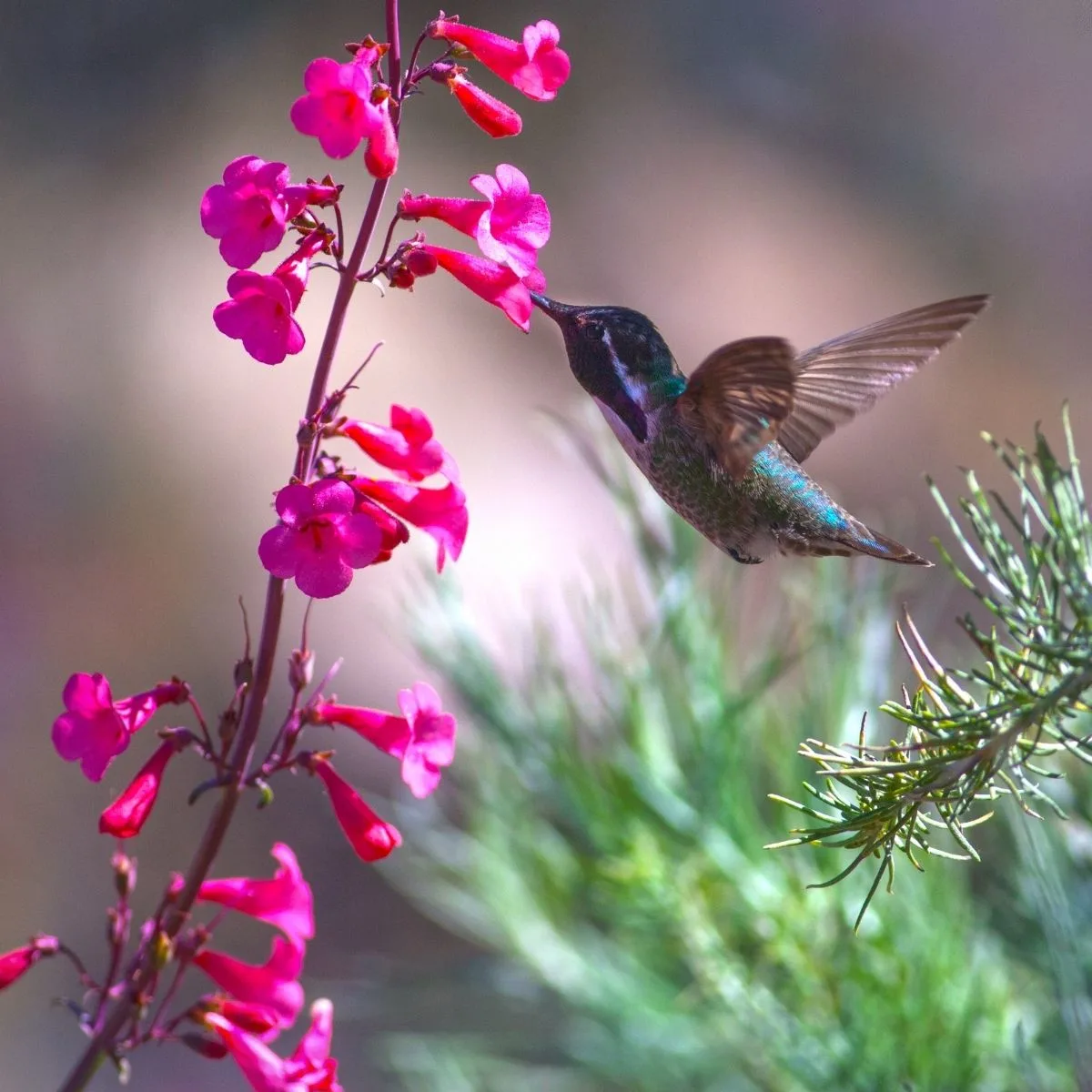
Providing a hummingbird feeder is a great way to encourage these energetic little birds to visit an area where you can enjoy watching them. But hummingbirds cannot only live on sugar water. They also need other food sources to stay healthy. So, where do they get that food from?
Hummingbirds eat the following things:
- Nectar from flowers
- Sugar water from hummingbird feeders
- Juveniles in the nest are fed exclusively on insects
- Pollen from flowers
- Tree sap
- The juice from overripe fruit
- Grit from sand or ashes
- Water
There are lots of things that you can do to encourage hummingbirds to make your garden their home base. By providing suitable food sources, you can team up with these gorgeous little birds to create an eco-friendly garden that will be naturally free of destructive insects. Let’s dive into what they eat in more detail.
Learn more about hummers:
- when do hummingbirds migrate?
- perennial flowers that attract hummingbirds
- purple flowers that attract hummingbirds
- red flowers that attract hummingbirds
What Do Hummingbirds Eat?
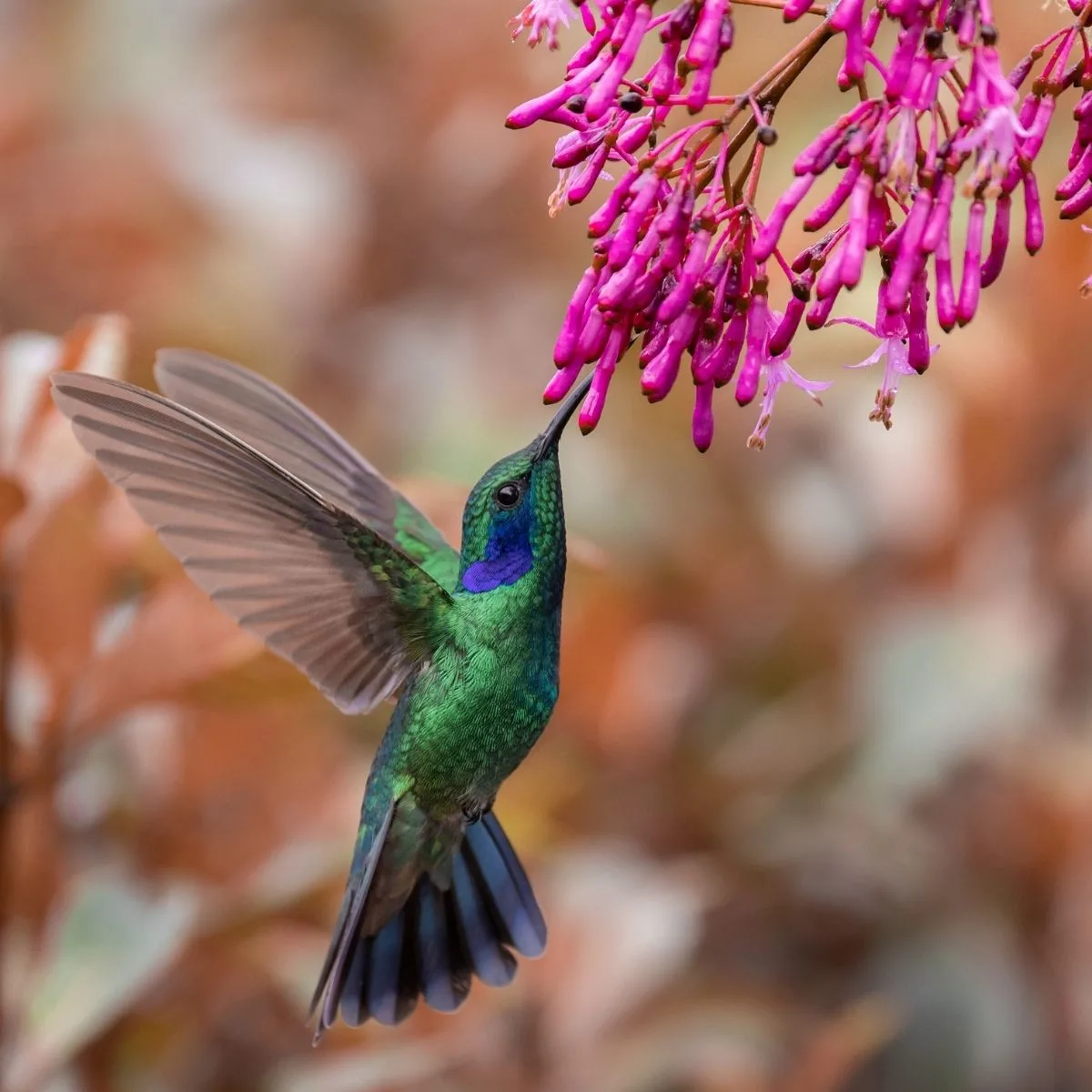
Although we most frequently see hummingbirds hovering around feeders or feeding on flowers, they require various food types. These small birds need more than just nectar to get the protein, vitamins, and amino acids that they need to stay healthy.
Hummingbirds consume nectar from flowers and feeders to meet their high metabolic requirements. Because their hearts can beat as fast as 1,260 beats per minute while in flight, they need sugar to keep them going. They also feed on small insects and feed their young exclusively on insects.
Hummingbirds must feed every ten to fifteen minutes throughout the day to meet their metabolic requirements. They hover almost magically around sugary feeders to feed their insatiable energy needs. Hummingbirds also occasionally feed on tree sap or take the juice from fruit to meet this energy requirement.
Hummingbirds eat flower nectar
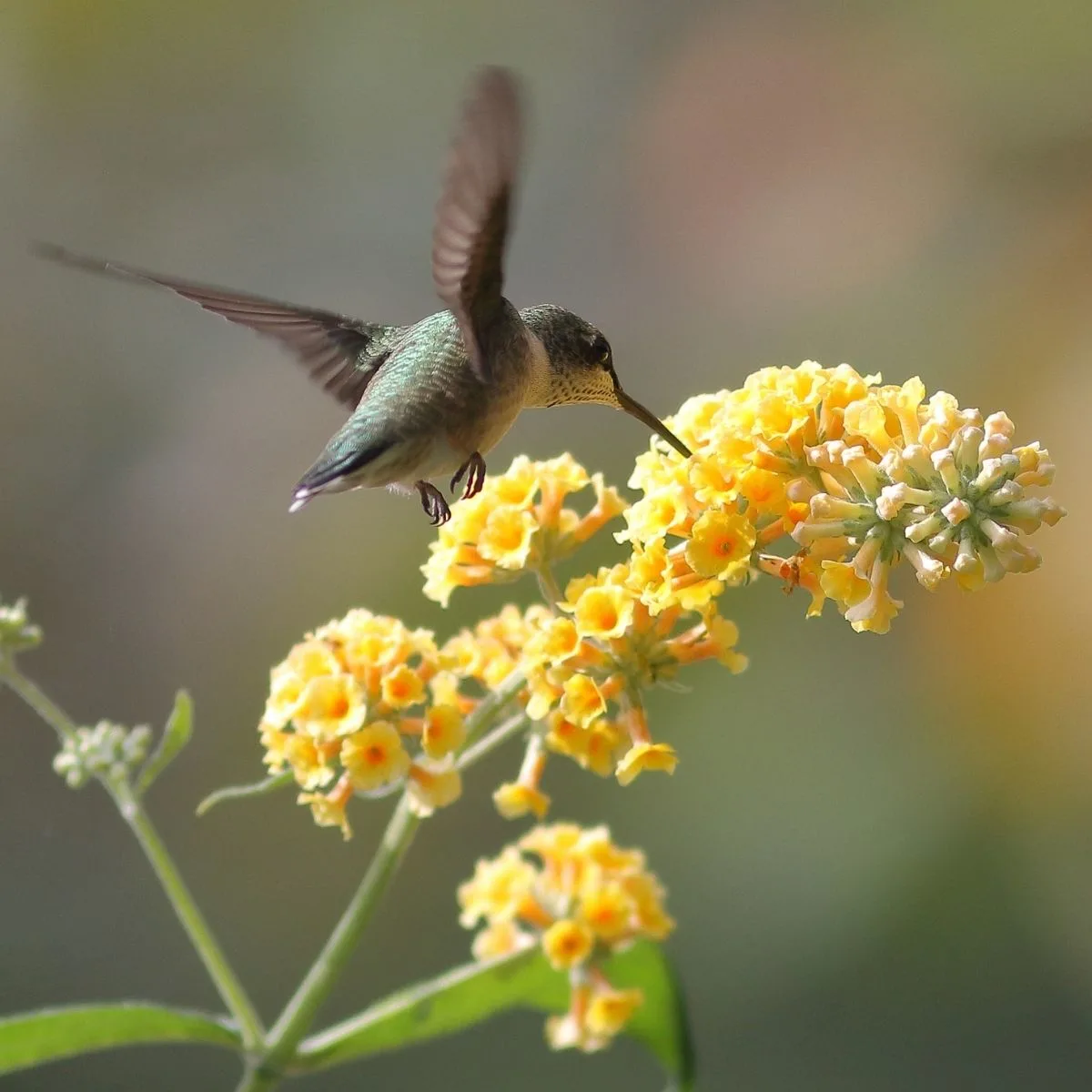
Long before hummingbird feeders provided some extra energy, hummingbirds relied on flowers to obtain their sugary fix. These tiny birds have adapted long needle-like bills that fit perfectly inside nectar-rich native plants like honeysuckle and bee balm.
Some plant types are rich in nectar and are good sources of food for hummingbirds. Planting indigenous flowering plants in the garden will not only provide a natural food source for these little jewels, but they will require less care than exotic flowers. Hummingbirds are especially attracted to plants that contain the color red.
Hummingbirds eat sugar nectar from feeders
There are few things as fascinating and beautiful as the sight of hummingbirds feeding at a hummingbird feeder. You can view a live cam of a very active hummingbird station in California here:
Hummingbirds flap their wings between 20 to 80 times per second – that is faster than we can even imagine. So, they appreciate additional energy pit stops in the form of hummingbird nectar feeders to meet their energy requirement to up their frenetic activity levels.
Hummingbird sugar nectar is easy to mix and can be refrigerated for up to a week (here’s the best hummingbird food recipe). Do not stray from the basic recipe and never be tempted to add anything or make substitutions of ingredients. Hummingbirds have very delicate and sensitive systems, and they can easily become ill if the mixture isn’t correct or is too strong.
Recipe for hummingbird nectar to fill your hummingbird feeder:
- Mix one cup of white sugar with 4 cups of water
- Stir the mixture until all the sugar is completely dissolved
- Wash and thoroughly dry your hummingbird feeder. This must be done regularly. Discard any leftover sugar nectar that might have been left in your feeder and keep the nectar fresh.
- Never add any food colorants to the sugar mix.
- Always add enough water so that there is a 1-4 ratio to the sugar.
Once the hummingbirds in your area have identified your feeder as a consistent food source, they will be frequent visitors.
Hummingbirds eat insects
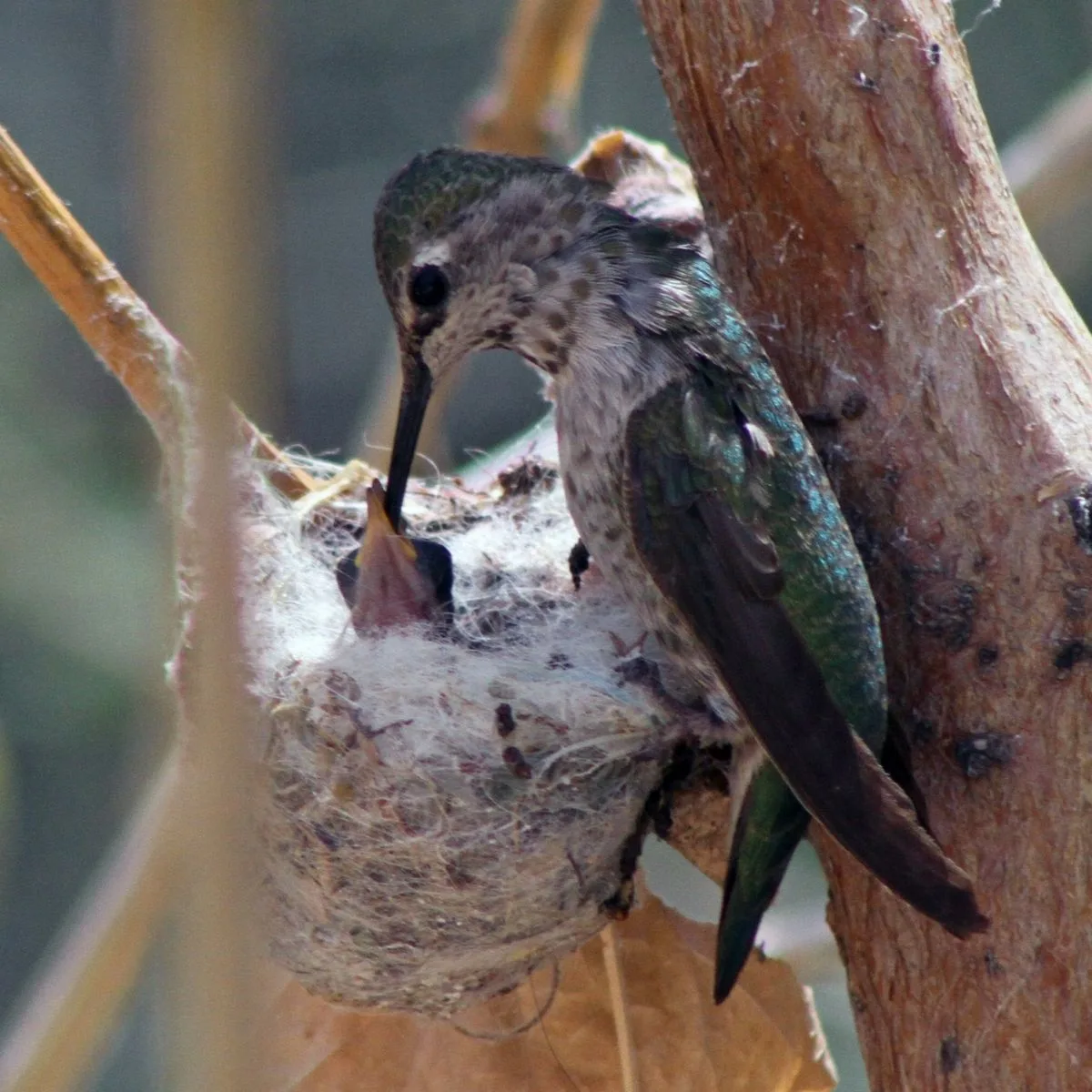
But between drinks at feeders or flowers, hummingbirds must hunt relentlessly for protein. This is particularly necessary when they are feeding chicks as the young birds are fed exclusively on insects.
Hummingbirds are great garden allies as they consume insects like ants, mosquitoes, wasps, gnats, aphids, and anything that they can catch. One of their favorite meals is spiders, and they also use their webs as one of the main construction materials for their tiny golf-ball-sized nests.
To keep the hummingbirds in your garden healthy, it is essential never to use pesticides to control garden insects. While it may be frustrating initially, try adding a few additional hummingbird feeders to your garden and let these tiny birds take care of the insects naturally.
You can also encourage hummingbirds to take up residence in your garden by providing them with a protein buffet in addition to the nectar feeder. All you need to do is place overripe fruit like bananas in a hanging basket where hummingbirds can access it. Fruit flies will quickly multiply in warm weather, and your hummingbirds will be able to feast.
Hummingbirds eat pollen
Although hummingbirds ingest pollen, it is not readily digested by their systems. However, they do swallow plenty, and a lot of pollen makes its way through their bodies.
Hummingbirds ingest pollen while foraging for nectar from flowers. While they are sipping nectar from flowers, pollen adheres to their long bills and tongues. In this way, they are also helping with the pollination of the flowers.
Pollen is not a viable food source for hummingbirds, even though they are forced to eat quite a lot of it while harvesting nectar from flowers. Only about 10% of the pollen that they ingest is digested.
Hummingbirds eat tree sap
In areas where nectar is in short supply, hummingbirds consume tree sap from wells in the bark drilled by woodpeckers. This sap is not as sweet as flower nectar, but it still provides a source of much-needed energy to the birds.
Hummingbirds eat juice from fruit
If it contains sweet juice, hummingbirds will try it! Hummingbirds have been observed drinking juice from overripe fruit that has been pecked open by other birds. Of course, they also tend to hover around damaged fruit to snap up insects that may also have been looking for a quick meal.
Hummingbirds eat grit
To aid in the digestion of insects, hummingbirds eat small amounts of fine grit or sand. They have also been known to ingest tiny amounts of ash. In addition to digestion, this grit also adds important minerals that are critical to their diet.
Hummingbirds drink water
Because hummingbirds don’t bathe in birdbaths like many other birds, we sometimes forget that they enjoy the water. These little birds love fine misted water, fountains, or even a dripping tap.
Although they get most of the water their bodies require from nectar, they also occasionally take sips of plain water. In addition to drinking, they shower and preen with great enthusiasm if they find a suitable water supply that can be fun to watch.
Types of Hummingbirds
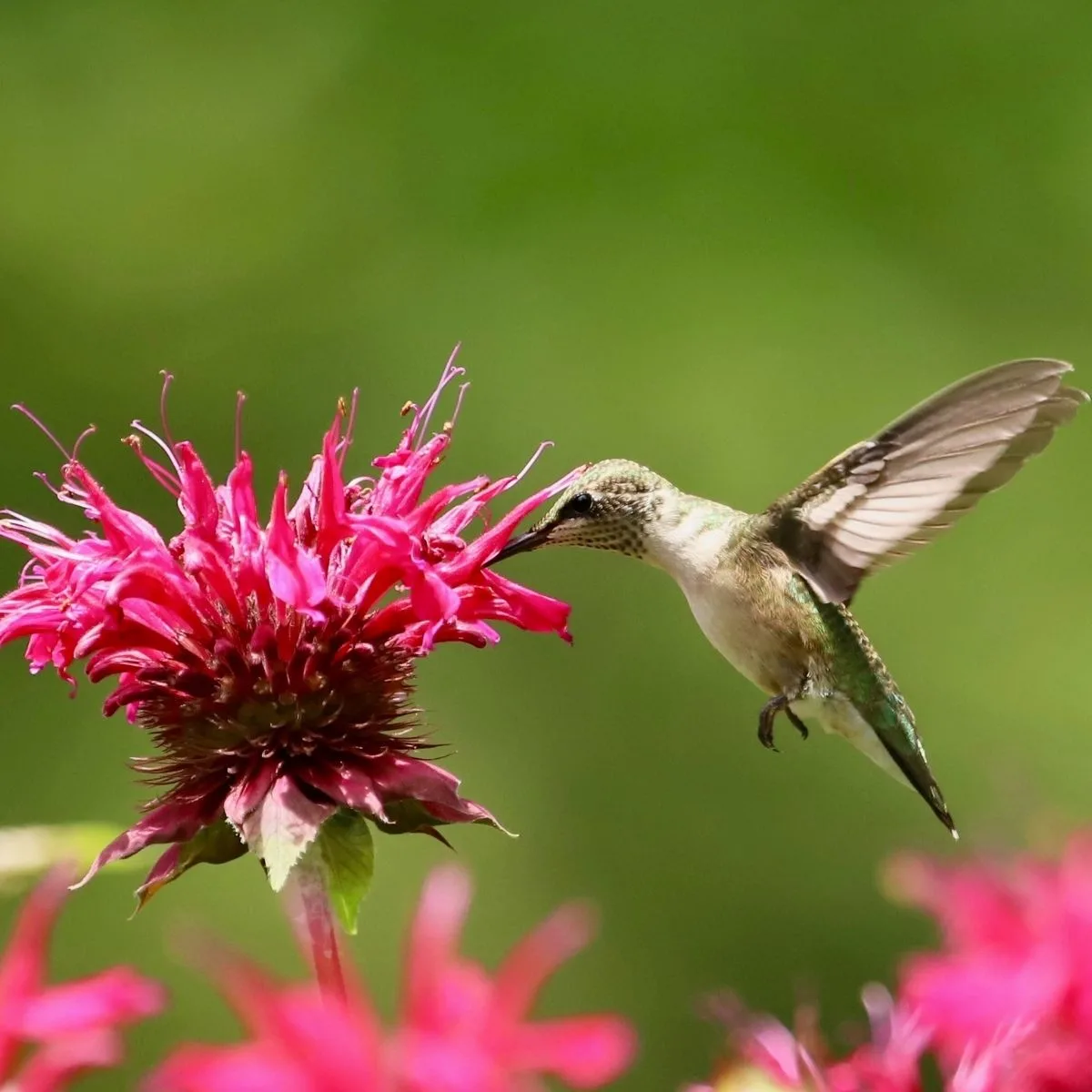
If you are able to identify what type of hummingbirds you have, it can also be very helpful in narrowing down more specifically what kind of diet they want to eat. For example, some types of hummingbirds might be more attracted to specific types of flowers.
Here are some common types of hummingbirds:
- Rivoli’s Hummingbird
- Blue-throated Mountain-gem
- Lucifer Hummingbird
- Ruby-throated Hummingbird
- Black-chinned Hummingbird
- Anna’s Hummingbird
- Costa’s Hummingbird
- Broad-tailed Hummingbird
- Rufous Hummingbird
- Allen’s Hummingbird
- Calliope Hummingbird
- Broad-billed Hummingbird
- Buff-bellied Hummingbird
- Violet-crowned Hummingbird
- White-eared Hummingbird
These are all types commonly found in the continental United States and Canada. As you can see, many of them are named for their physical features, which can make it easier to identify them. Some parts of the country may also have vagrant species.
When you know what species you have in your area, you can learn more about the hummingbird diets that are best for them. You can also add perches for hummingbirds, nectar for hummingbirds, and lots of great flowers that they’ll be attracted to.
Conclusion
Hummingbirds need to feed continuously throughout the day to survive. The demands of their high metabolic rate require them to seek energy-rich foods like sweet flower nectar. Their bills are specially adapted to harvest nectar from tubular flowers. In addition to nectar, hummingbirds eat insects, and tree sap and will occasionally take the juice from overripe fruit.
We can all do our part to help protect this beautiful species. In addition to having birdfeeders and flowers that they love, you can also help by not using pesticides and keeping your cats indoors. It’s also very helpful to plant native plants in your gardens.
Now that you know more about hummingbird food, you know how to set up a garden that is friendly to them and helps provide them with the extra nutrients they need to stay healthy and strong. As an added bonus, you get to enjoy watching them flutter in your garden.
Do you have any tips or advice for hummingbird gardens you want to share with us?
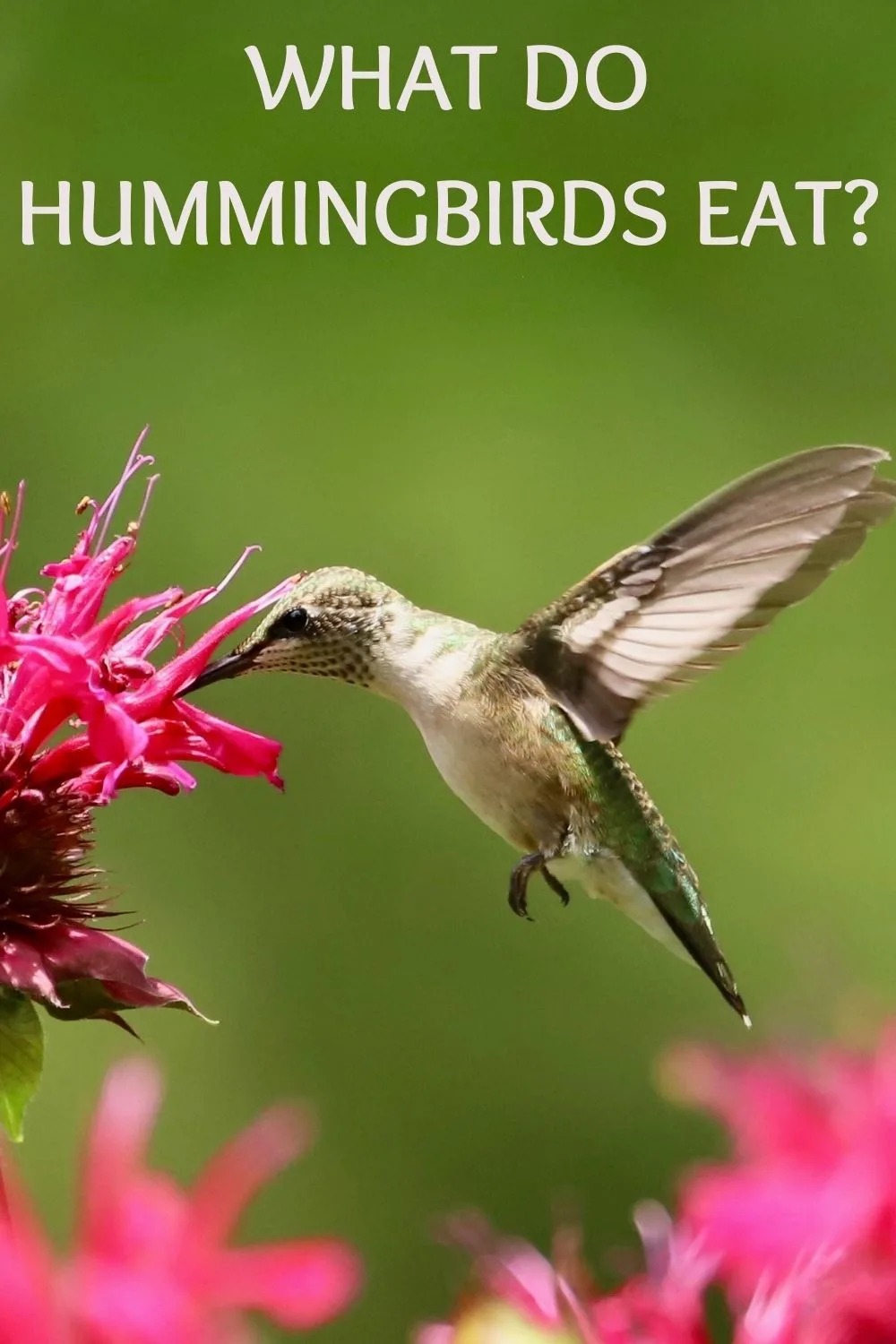


What Do Cardinals Eat? Easy Ways To Attract Them To Your Yard
Tuesday 23rd of August 2022
[…] what do hummingbirds eat? […]
Lillian Winterwerb
Tuesday 17th of May 2022
Looking for perennials that attract hummingbirds Thanks
Adriana
Tuesday 17th of May 2022
Lillian, we have a list here: https://www.backyardgardenlover.com/perennial-flowers-that-attract-hummingbirds/